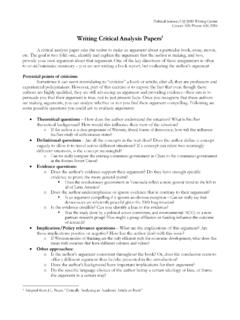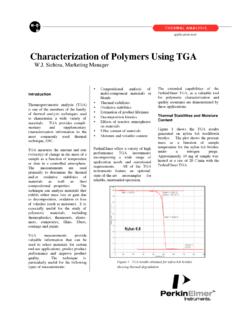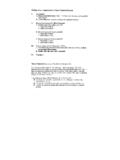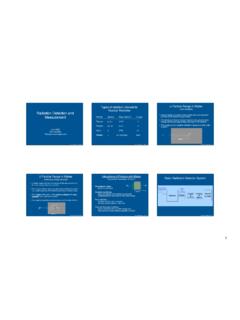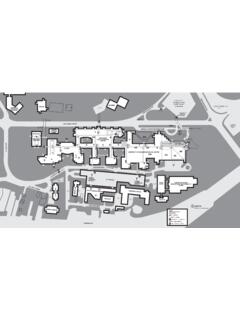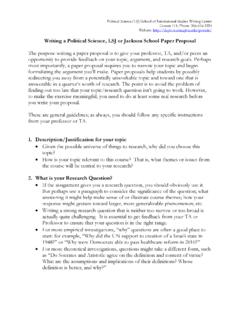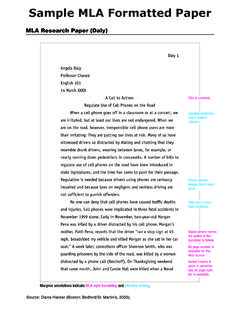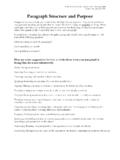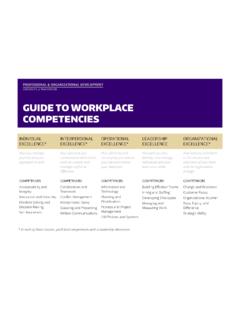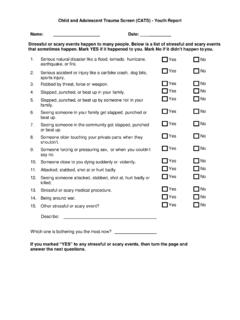Transcription of FAST 2005 copy - University of Washington
1 F A S T _____ Functional analysis Screening Tool Client:_____ Date:_____ Informant:_____ Interviewer:_____ To the Interviewer: The FAST identifies factors that may influence problem behaviors. Use it only for screening as part of a comprehensive functional analysis of the behavior. Administer the FAST to several individuals who interact with the client frequently. Then use the results to guide direct observation in several different situations to verify suspected behavioral functions and to identify other factors that may influence the problem behavior.
2 To the Informant: Complete the sections below. Then read each question carefully and answer it by circling "Yes" or "No." If you are uncertain about an answer, circle N/A. Informant-Client Relationship 1. Indicate your relationship to the person: ___Parent ___Instructor ___Therapist/Residential Staff _____(Other) 2. How long have you known the person? ____Years ____Months 3. Do you interact with the person daily? ____Yes ____No 4. In what situations do you usually interact with the person? ___ Meals ___ Academic training ___ Leisure ___ Work or vocational training ___ Self-care _____(Other) problem Behavior Information 1.
3 problem behavior (check and describe): __ Aggression _____ __ Self-Injury _____ __ Stereotypy _____ __ Property destruction _____ __ Other _____ 2. Frequency: __Hourly __Daily __Weekly __Less often 3. Severity: __Mild: Disruptive but little risk to property or health __Moderate: Property damage or minor injury __Severe: Significant threat to health or safety 4. Situations in which the problem behavior is most likely to occur: Days/Times_____ Settings/Activities _____ Persons present _____ 5. Situations in which the problem behavior is least likely to occur: Days/Times_____ Settings/Activities _____ Persons present _____ 6.
4 What is usually happening to the person right before the problem behavior occurs?_____ _____ _____ 7. What usually happens to the person right after the problem behavior occurs?_____ _____ _____ 8. Current treatments_____ _____ _____ _____ _____ 1. Does the problem behavior occur when the person is not receiving attention or when caregivers are paying attention to someone else? Yes No N/A 2. Does the problem behavior occur when the person s requests for preferred items or activities are denied or when these are taken away? Yes No N/A 3. When the problem behavior occurs, do care-givers usually try to calm the person down or involve the person in preferred activities?
5 Yes No N/A 4. Is the person usually well behaved when (s)he is getting lots of attention or when preferred activities are freely available? Yes No N/A 5. Does the person usually fuss or resist when (s)he is asked to perform a task or to participate in activities? Yes No N/A 6. Does the problem behavior occur when the person is asked to perform a task or to participate in activities? Yes No N/A 7. If the problem behavior occurs while tasks are being presented, is the person usually given a break from tasks? Yes No N/A 8. Is the person usually well behaved when (s)he is not required to do anything?
6 Yes No N/A 9. Does the problem behavior occur even when no one is nearby or watching? Yes No N/A 10. Does the person engage in the problem behavior even when leisure activities are available? Yes No N/A 11. Does the problem behavior appear to be a form of self-stimulation? Yes No N/A 12. Is the problem behavior less likely to occur when sensory stimulating activities are presented? Yes No N/A 13. Is the problem behavior cyclical, occurring for several days and then stopping? Yes No N/A 14. Does the person have recurring painful conditions such as ear infections or allergies?
7 If so, list:_____ Yes No N/A 15. Is the problem behavior more likely to occur when the person is ill? Yes No N/A 16. If the person is experiencing physical problems, and these are treated, does the problem behavior usually go away? Yes No N/A Scoring Summary Circle the number of each question that was answered Yes and enter the number of items that were circled in the Total column. Items Circled Yes Total Potential Source of Reinforcement 1 2 3 4 ____ Social (attention/preferred items) 5 6 7 8 ____ Social (escape from tasks/activities) 9 10 11 12 ____ Automatic (sensory stimulation) 13 14 15 16 ____ Automatic (pain attenuation) 2005 The Florida Center on Self-Injury
